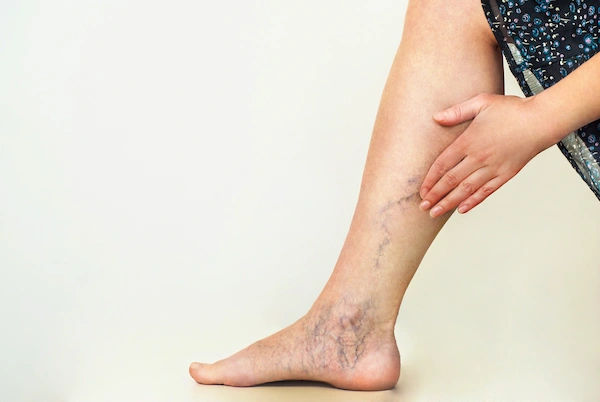Guide to Paracetamol For Fever Body Pain
Learn how Paracetamol safely and effectively treats fever and body pain. Get dosage guidelines, understand its uses, and when to consult a doctor.

Written by Dr. Dhankecha Mayank Dineshbhai
Reviewed by Dr. Md Yusuf Shareef MBBS
Last updated on 25th Oct, 2025

Introduction
Fever and body pain can knock you down fast—whether from a cold, flu, COVID-19, dengue, or a long workweek catching up with you. Paracetamol (also called acetaminophen) is one of the most trusted medicines worldwide to reduce fever and relieve pain. When used correctly, it works quickly, is gentle on the stomach, and is safe for adults and children. But questions come up: How much paracetamol should you take for fever? What’s the maximum daily dose? Is it safe to combine with other cold-and-flu medicines? And what about kids, pregnancy, or dengue?
This complete guide answers those questions with practical steps, examples, and safety tips, so you can use paracetamol confidently for fever and pain. You’ll learn how it works, exact dosing by age and weight, when to choose it over other options, when not to use it, and red flags that mean you should seek medical care. We also cover special situations—like post-vaccination fever, COVID-19, and dengue—plus common mistakes to avoid. If symptoms persist beyond a few days or you’re unsure what’s causing your fever and body pain, it’s wise to talk to a doctor. Let’s get you feeling better, safely.
What Is Paracetamol and How Does It Work?
Paracetamol (acetaminophen) is an analgesic (pain reliever) and antipyretic (fever reducer). It’s different from anti-inflammatory drugs—so while it helps headaches, sore throat, muscle aches, and fever, it doesn’t reduce inflammation like ibuprofen or naproxen. That’s why it’s often a first choice when you need relief without irritating the stomach.
Paracetamol reduces fever by acting on the brain’s hypothalamus to lower the body’s “set point” for temperature, helping you feel more comfortable as your body fights infection. For pain, it dampens pain signals in the central nervous system. It likely works by inhibiting prostaglandin production in the brain and spinal cord and may engage serotonin pathways—explaining why it helps both fever and pain without being harsh on the stomach.
Onset and duration:
- Onset: You’ll usually feel relief within 30–60 minutes after a standard dose.
- Peak effect: Around 1–2 hours.
- Duration: Typically 4–6 hours for immediate-release tablets or syrups, and about 8 hours for extended-release forms
Paracetamol is metabolized in the liver. Most is safely processed and excreted, but a small portion becomes a toxic byproduct (NAPQI) that’s normally neutralized by glutathione. Overdose overwhelms this detox system—hence the strong emphasis on maximum daily dose limits to protect your liver.
Consult a Top General Physician
When Should You Use Paracetamol for Fever and Body Pain?
You treat fever when it makes you uncomfortable—not just because the thermometer reads a certain number. A mild fever can help your immune system work more efficiently; use paracetamol when fever or body pain disrupts rest, hydration, or daily function.
General guidance:
- Adults: Consider paracetamol if fever is 38°C (100.4°F) or higher and you feel unwell; also for headaches, sore throat, toothache, menstrual cramps, or muscle pain.
- Children: Use paracetamol if fever causes distress, poor feeding, or sleep disruption—not solely to normalize the number . For infants under 3 months with a fever ≥38°C, seek medical evaluation promptly.
- Non-drug measures: Stay hydrated, rest, use lightweight clothing, and consider tepid sponging if very uncomfortable (avoid cold baths).
Common causes of fever and body aches include viral infections (colds, influenza, COVID-19), bacterial infections, post-vaccination reactions, and mosquito-borne illnesses like dengue in endemic areas. Paracetamol is generally safe across these scenarios and is preferred for dengue due to bleeding risks with NSAIDs
If fever lasts beyond 3 days in adults, or beyond 24–48 hours in young children, or is accompanied by rash, shortness of breath, confusion, severe headache, neck stiffness, or persistent vomiting, seek medical care. If symptoms persist beyond two weeks, consult a doctor online with Apollo24|7 for further evaluation.
Adult Dosing: How Much Paracetamol for Fever and Pain?
For most adults:
- Typical dose: 500–1,000 mg every 4–6 hours as needed.
- Maximum daily dose: Do not exceed 4,000 mg (4 g) in 24 hours from all sources combined .
- Practical tip: Many “cold & flu,” “all-in-one,” and “pain relief” products already contain paracetamol (sometimes listed as “APAP”). Read labels to prevent double-dosing .
Who should aim lower?
- Older adults, those who drink 3+ alcoholic beverages daily, and anyone with liver disease should target a lower maximum, often 2,000–3,000 mg/day, after discussing with a clinician. A conservative approach is safest until you confirm with your doctor.
- Renal impairment: If your kidney function is reduced (e.g., CrCl <30 mL/min), dosing intervals may need to be extended to every 6–8 hours. Speak with your clinician.
Extended-release formulations:
- Typical strength: 650 mg per tablet, taken every 8 hours as needed.
- Maximum daily dose: Usually 3,900 mg/day (six 650 mg tablets) unless your healthcare provider advises otherwise.
- Do not crush or split extended-release tablets, and don’t use them for children.
Examples:
- Fever and body pain with flu: 1,000 mg at 8 am, 500–1,000 mg at 12 pm, 4 pm, and 8 pm—ensuring you stay at or under 4,000 mg/day.
- If also using a “night-time cold” syrup, check the label: many contain 500 mg paracetamol per dose—count this in your daily total.
Children’s Dosing: Safe Paracetamol Use by Weight and Age
Paracetamol is safe for children when dosed by weight:
- Standard pediatric dose: 10–15 mg/kg per dose every 4–6 hours as needed.
- Maximum: Do not exceed 75 mg/kg/day or 5 doses in 24 hours (whichever is lower), and never exceed adult maximums.
Examples for clarity (always check your product’s strength):
- 6 kg infant: 60–90 mg per dose every 4–6 hours; max ~300–450 mg/day.
- 12 kg toddler: 120–180 mg per dose every 4–6 hours; max ~600–900 mg/day.
- 20 kg child: 200–300 mg per dose every 4–6 hours; max ~1,000–1,500 mg/day.
- 30 kg child: 300–450 mg per dose every 4–6 hours; max ~1,500–2,250 mg/day.
Babies under 3 months:
If a baby under 3 months has a fever (≥38°C), seek medical care first; the cause needs prompt assessment . Your doctor may advise dosing in some cases, but evaluation is key.
Practical tips:
- Use a dosing syringe or the device that came with the medicine—kitchen teaspoons are inaccurate.
- Many pediatric syrups come in different strengths (e.g., 120 mg/5 mL; 160 mg/5 mL). Confirm the concentration, calculate the dose for your child’s weight, and keep a dosing log to avoid errors.
- Avoid combination products in very young children unless prescribed.
- If your child’s fever or pain persists beyond 24–48 hours, or they develop red flags like lethargy, breathing difficulty, rash, stiff neck, or dehydration, consult a doctor. If your condition does not improve after trying these methods, book a physical visit to a doctor with Apollo24|7.
Safety First: Who Should Be Extra Careful or Avoid Paracetamol?
Liver disease and alcohol:
Paracetamol is primarily processed by the liver. In chronic liver disease or heavy alcohol use, the risk of liver injury from standard doses increases. Discuss personalized maximums; many clinicians advise limiting to 2,000 mg/day and spacing doses.
Drug interactions:
- Warfarin: Prolonged, regular paracetamol use may increase INR (blood thinning effect). If you take warfarin, check your INR more frequently when using paracetamol regularly and inform your clinician
- Isoniazid and other hepatotoxic drugs: Combined use can increase liver risk; use the lowest effective paracetamol dose and monitor.
- Combination cold/flu remedies: Many contain paracetamol—avoid doubling up.
Pregnancy and breastfeeding:
- Pregnancy: Paracetamol is generally considered safe at recommended doses for fever and pain in pregnancy; use the lowest effective dose for the shortest time and discuss recurrent use with your obstetrician. Fever itself can be harmful in pregnancy, so controlled use is often appropriate.
- Breastfeeding: Paracetamol passes into breast milk in very small amounts and is considered compatible with breastfeeding.
Allergy and rare reactions:
Serious skin reactions (e.g., SJS/TEN) are rare but possible. Stop the medicine and seek urgent care if you develop a rash, blistering, or facial swelling.
Paracetamol vs. Ibuprofen: Which Is Better for Fever and Pain?
Both paracetamol and ibuprofen reduce fever and relieve pain. Evidence suggests:
- Fever: In children and adults, ibuprofen may reduce temperature slightly faster or to a greater degree than paracetamol, but both improve comfort.
- Pain: Both work for headaches, toothache, and muscle pain; ibuprofen may be preferable for inflammatory pain (e.g., sprains), while paracetamol is gentler on the stomach.
Should you alternate or combine?
- NICE guidance suggests using one agent at a time and only considering alternating if distress persists between doses, with careful attention to timing to prevent dosing errors.
- While alternating can modestly improve fever reduction in some studies, the risk of confusion and overdose increases in real-world use . If advised to alternate, write down a schedule (e.g., paracetamol, then ibuprofen 3 hours later), and use a dosing log.
Special note:
Avoid ibuprofen if dehydration, kidney problems, stomach ulcers, or certain infections (e.g., suspected dengue) are a concern. In dengue-endemic areas, paracetamol is preferred for fever and pain.
Overdose and Emergency Steps
Recognizing overdose:
- Adults taking more than 7.5 g in a single ingestion or exceeding 4 g/day repeatedly are at risk for liver injury. In children, lower thresholds based on weight apply .
- Early symptoms within 24 hours may be mild or nonspecific: nausea, vomiting, sweating, abdominal discomfort. Liver damage often becomes apparent after 24–72 hours: right upper abdominal pain, dark urine, jaundice, confusion.
What to do:
- Seek emergency care immediately if you suspect an overdose, even if you feel fine. Early treatment with N-acetylcysteine (NAC) can prevent liver damage if started within 8 hours of overdose.
- Bring the medicine bottle(s) and note the time and amount taken.
- Do not wait for symptoms to worsen.
Prevention:
- Keep a dosing log, especially if multiple caregivers are involved with a child.
- Avoid combining multiple products that contain paracetamol/APAP.
Special Situations and Practical Scenarios
Dengue fever:
In dengue-endemic regions, paracetamol is recommended for fever and body pain. Avoid aspirin and NSAIDs due to bleeding risk and potential worsening of dengue hemorrhagic complications.
Post-vaccination fever and soreness:
Mild fever and body pain after vaccines are common. Paracetamol can help with comfort and sleep. Dosing by weight for children is important; use the lowest effective dose and avoid premedication unless advised.
COVID-19 and flu-like illness:
Paracetamol is safe and effective to reduce fever and relieve body pain from respiratory viral infections. Focus on rest, hydration, and fever control for comfort. Seek medical help for shortness of breath, chest pain, confusion, persistent high fever, or if you’re in a high-risk group.
Forms and How to Take Paracetamol Correctly
Common forms:
- Immediate-release tablets/capsules: 325 mg, 500 mg, 650 mg
- Extended-release tablets: typically 650 mg
- Syrups/suspensions: common strengths include 120 mg/5 mL and 160 mg/5 mL
- Drops for infants: higher concentration—dose carefully by weight
- Suppositories: useful when vomiting or unable to swallow
How to take:
- With or without food. If you have a sensitive stomach, take it with a light snack.
- Space doses evenly. For immediate-release, every 4–6 hours; for extended-release, every 8 hours.
- Do not split extended-release tablets. For syrups, shake the bottle and use the supplied measuring device.
Avoiding Common Dosing Mistakes
Hidden paracetamol:
- Many cold/flu combinations contain paracetamol along with decongestants, antihistamines, or cough suppressants. Always scan labels for “paracetamol,” “acetaminophen,” or “APAP” .
Accurate measuring:
- Use an oral syringe for liquid medicines in children for precision. Avoid kitchen spoons.
- Keep a dosing diary: record time, amount, and product name to prevent accidental overdose.
Practical system at home:
If multiple caregivers are dosing a child, keep the log on the fridge or in a shared phone note.
Store medicines out of children’s sight and reach, in child-resistant packaging.
Real-Life Case Examples
- Adult case: Fever 38.8°C with flu-like symptoms and body pain
- Plan: Take paracetamol 1,000 mg now; reassess in 4–6 hours. Hydrate and rest. If needed, another 500–1,000 mg dose later, staying under 4,000 mg/day. Avoid alcohol.
- Watch-outs: If fever lasts beyond 3 days or severe symptoms develop (shortness of breath, chest pain), consult a doctor. Consider an online consultation with Apollo24|7 if you need guidance on home care or antivirals eligibility.
Toddler case: 20 kg child with nighttime fever and fussiness
- Dose: 200–300 mg per dose (10–15 mg/kg) of paracetamol syrup every 4–6 hours as needed, not exceeding 5 doses/24 hours.
- Tips: Use an oral syringe, keep a log, and monitor hydration and alertness.
- Seek care if fever persists beyond 24–48 hours, if the child is very sleepy, has a rash, stiff neck, breathing difficulty, or poor intake. Apollo24|7 offers pediatric online consults for timely guidance and can arrange home collection for basic tests if advised (e.g., CBC in prolonged fevers).
When to Seek Medical Help?
Red flags for fever and pain:
- Adults: Fever >39.5°C (103.1°F) not responding to medicine, confusion, chest pain, severe headache, stiff neck, rash, breathing trouble, persistent vomiting.
- Children: Age under 3 months with fever ≥38°C; poor responsiveness, stiff neck, rash, breathing difficulty, dehydration (dry mouth, no tears, low urine), seizures, fever >48 hours.
If fever or pain doesn’t improve after 2–3 days, or you’re unsure about dosing or causes, consult a doctor online with Apollo24|7 for further evaluation. If lab tests are relevant (e.g., dengue NS1 antigen, complete blood count, CRP), Apollo24|7 offers a convenient home collection to support your care plan.
Myths and Facts About Paracetamol
- Myth: “If one tablet helps, two must be better.” Fact: More is not better—exceeding the recommended dose risks serious liver injury
- Myth: “Paracetamol is anti-inflammatory.” Fact: It reduces fever and pain but has minimal anti-inflammatory action.
- Myth: “It’s okay to mix any cold medicine.” Fact: Many contain paracetamol—mixing them can cause accidental overdose.
- Myth: “It’s unsafe in pregnancy.” Fact: It’s generally considered safe at recommended doses; use the lowest effective dose and consult your obstetrician for frequent use.
Storage, Expiry, and Safe Disposal
- Store at room temperature away from moisture and heat, in child-resistant containers, out of children’s reach.
- Check expiry dates; potency can decline post-expiry. Do not use damaged or discolored liquids.
- Dispose of expired or unneeded medicines per local guidelines or take-back programs. Do not flush unless the label instructs.
Cost, Access, and Smart Buying Tips
Generic paracetamol is as effective as branded versions and typically less expensive.
Compare per-dose cost across forms. Larger packs may reduce cost per dose but store safely.
For households with kids, keep the correct concentration of pediatric syrup and an oral syringe on hand.
Conclusion
Paracetamol is a reliable, everyday medicine that, when used correctly, can quickly bring down fever and ease body pain—helping you rest, hydrate, and recover. The keys to safe and effective use are straightforward: choose the right dose, respect the maximum daily limit, and watch for hidden paracetamol in combination remedies. For children, dosing by weight and using a proper measuring device prevent the most common mistakes. Special situations—like dengue, post-vaccination fever, pregnancy, or chronic liver disease—benefit from tailored guidance, but paracetamol remains a first-line option for comfort in most cases.
Use paracetamol to reduce discomfort, not just to chase a number on the thermometer. Pair it with smart home care—fluids, light clothing, rest—and keep an eye on red flags that warrant medical attention. If your fever or pain doesn’t improve after a few days, or if you’re unsure about dosing or combinations, consult a clinician. Apollo24|7 offers convenient online doctor consultations and, when needed, home collection for common tests to guide your care. With a clear plan and a few safety checks, you can use paracetamol confidently and get back on your feet faster.
Consult a Top General Physician
Consult a Top General Physician

Dr. Sandhya Chandel
General Physician/ Internal Medicine Specialist
16 Years • MBBS, MD (Int. Med.), IDCCM
Bilaspur
Apollo Hospitals Seepat Road, Bilaspur
(125+ Patients)

Dr. Swagata Sircar
General Physician/ Internal Medicine Specialist
8 Years • MBBS, MD General Medicine
Kolkata
HealthYou Speciality Clinic & Diagnostics., Kolkata

Dr. Harshendra Jaiswal
General Physician/ Internal Medicine Specialist
12 Years • MBBS , MD (General medicine)
Kolkata
108 DHANA DHANVANTARI Clinic, Kolkata
(25+ Patients)

Dr. Gunashree V L
General Physician/ Internal Medicine Specialist
3 Years • MBBS
Bengaluru
Apollo Clinic, JP nagar, Bengaluru

Dr Syed Mateen Pasha
General Physician
2 Years • MBBS
Bengaluru
PRESTIGE SHANTHINIKETAN - SOCIETY CLINIC, Bengaluru
Consult a Top General Physician

Dr. Sandhya Chandel
General Physician/ Internal Medicine Specialist
16 Years • MBBS, MD (Int. Med.), IDCCM
Bilaspur
Apollo Hospitals Seepat Road, Bilaspur
(125+ Patients)

Dr. Swagata Sircar
General Physician/ Internal Medicine Specialist
8 Years • MBBS, MD General Medicine
Kolkata
HealthYou Speciality Clinic & Diagnostics., Kolkata

Dr. Harshendra Jaiswal
General Physician/ Internal Medicine Specialist
12 Years • MBBS , MD (General medicine)
Kolkata
108 DHANA DHANVANTARI Clinic, Kolkata
(25+ Patients)

Dr. Gunashree V L
General Physician/ Internal Medicine Specialist
3 Years • MBBS
Bengaluru
Apollo Clinic, JP nagar, Bengaluru

Dr Syed Mateen Pasha
General Physician
2 Years • MBBS
Bengaluru
PRESTIGE SHANTHINIKETAN - SOCIETY CLINIC, Bengaluru
More articles from General Medical Consultation
Frequently Asked Questions
How long does paracetamol take to work for fever and body pain?
Most people feel relief within 30–60 minutes. Effects last about 4–6 hours for standard tablets or syrups and around 8 hours for extended-release.
What is the maximum daily dose of paracetamol for adults?
Do not exceed 4,000 mg/day from all sources. If you drink alcohol regularly, are older, or have liver disease, talk to your doctor about a lower maximum (often 2,000–3,000 mg/day).
Can I alternate paracetamol and ibuprofen for fever?
Not routinely. NICE suggests using one at a time, and only considering alternating if distress persists between doses—with a careful schedule to avoid errors. Ask your doctor before alternating.
Is paracetamol safe in pregnancy and breastfeeding?
Generally yes, when used at recommended doses for the shortest necessary time. Discuss frequent use with your obstetrician. It’s also compatible with breastfeeding.
Can I take paracetamol with antibiotics or cold-and-flu medicines?
Paracetamol doesn’t generally conflict with antibiotics, but many cold-and-flu products already contain paracetamol (APAP). Always check labels to avoid double-dosing.




